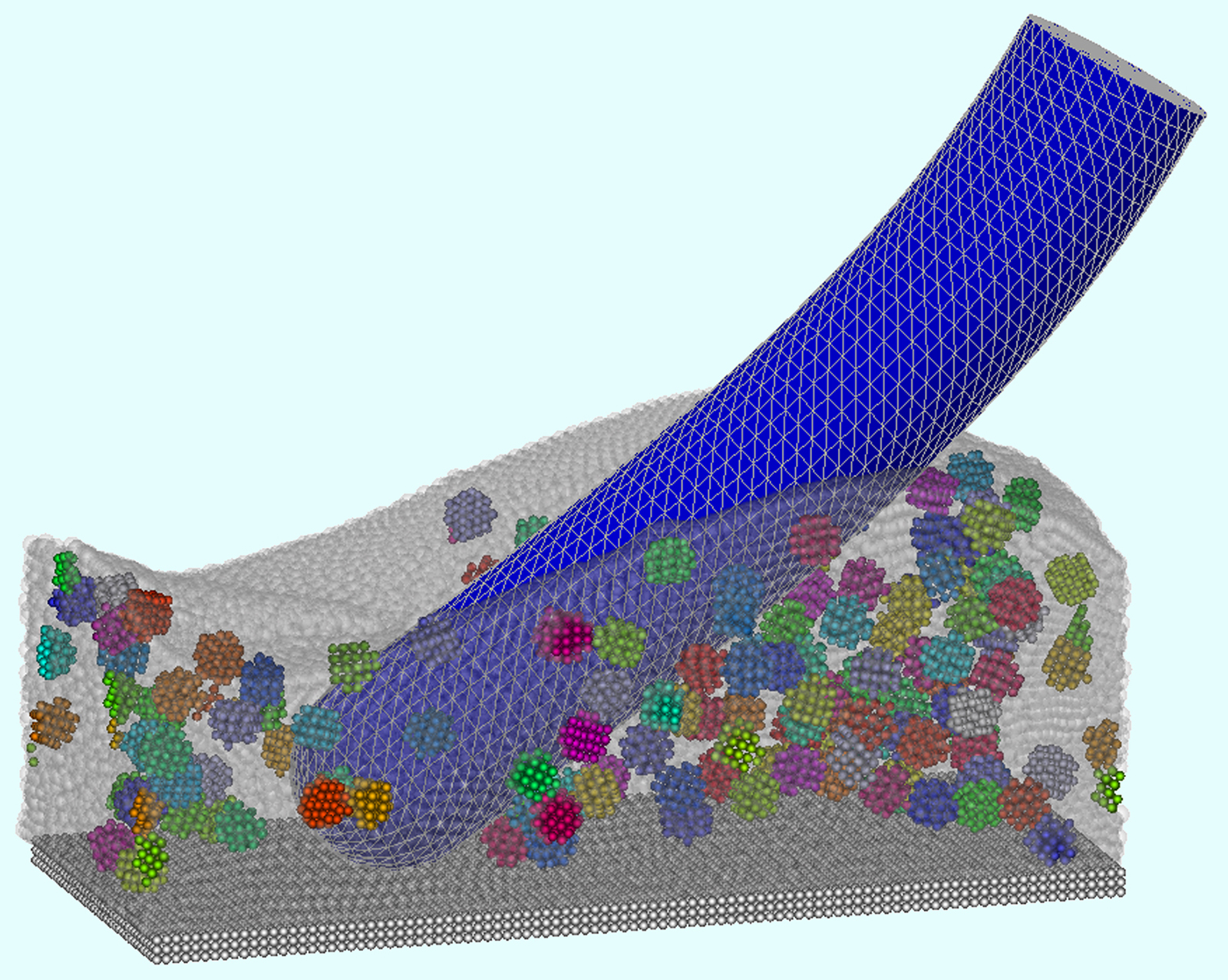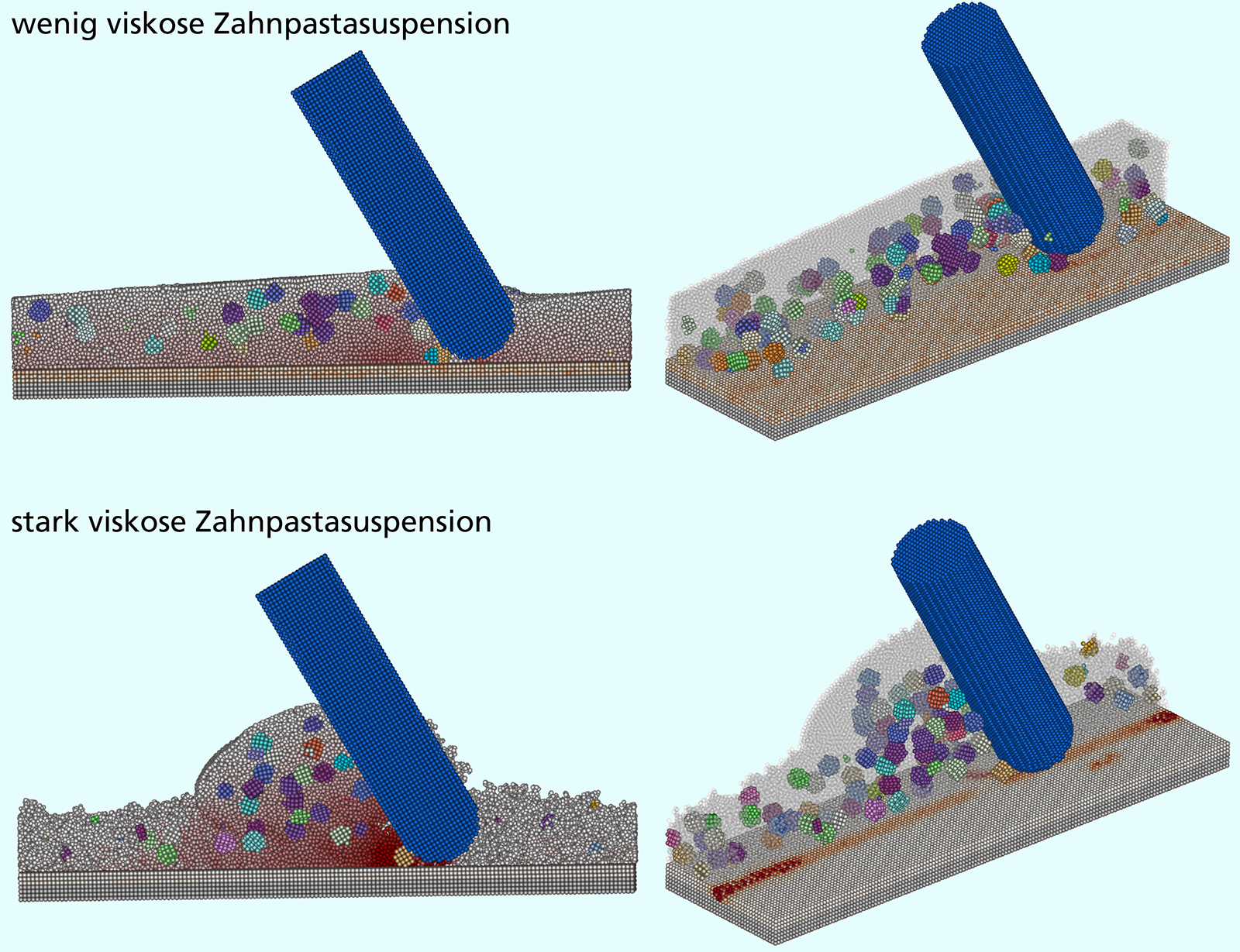

Developing toothpastes and brushes is time-consuming: Numerous samples must be made and examined. A new type of simulation can be used to change the different parameters, for example, the shape of the bristles or the size of the abrasives can be changed with a click. Manufacturers can increase the quality of new dental care products and increase the speed to market. Whether the results of the simulation also pass the practical test was checked by researchers at the Fraunhofer IMWS.
In the morning when we get up we can feel a furry coating on our teeth: A biofilm that has formed during the night and in time can cause caries. It is therefore important to take the toothbrush and rid yourself of this furry coating. The choice of dental care products is large. For example, brushes have rounded and pointed, hard and soft bristles. Even brushes with different length filaments are offered. Which clean the teeth most thoroughly and which are the most gentle on dental enamel could only be estimated through experiments by manufacturers to date.
The situation is the same with the abrasive particles in toothpastes. Various pastes with different particles have to be blended and examined on artificial dental enamel – a time-consuming affair. Another drawback: As only the whole system of toothbrush, toothpaste and dental enamel can be examined, with these experiments it is difficult for producers to evaluate which effect each individual parameter exerts.
A new type of simulation provides a remedy. It was developed by researchers of the Fraunhofer Institute for Mechanics of Materials IWM in Freiburg. »With our method the manufacturers of dental care products can determine which effect the respective factors have on cleaning quickly, cost-effectively and reliably«, said Dr. Christian Nutto, scientist at the Fraunhofer IWM. »Unlike in the experiment the individuals can be easily varied in the simulation – whether the size, the shape or even the quantity of abrasive particles in the toothpaste, whether the material from which they are made or the shape and elasticity of the brush filaments. We can make the investigations much broader than would be possible with real tests; which is noticeable in the quality of the products.«
What effects do the shape and stiffness of the toothbrush filaments have on toothbrushing? How do the different abrasives act and the viscosity of the toothpaste, on dental enamel and the actual target: the biofilm on the teeth? The simulation can answer such questions reliably – and long before the manufacturers have blended the toothpaste.
Christian Nutto uses the SimPARTIX® simulation software, developed at the IWM, which in turn uses the smoothed particle hydrodynamics simulation method, or SPH for short. »We specify properties such as flowability, density, shape and fill factor of the abrasive particles«, explained Nutto. Parameters for the dental enamel are also taken into account. The virtual toothbrush filament then strokes across the surface of the dental enamel: The simulation determines how the abrasive particles interact with the elastic filament. It also calculates the cleaning effect and how aggressively the abrasive particles act on the dental enamel.
The team of the »Powder Technology, Fluid Dynamics« group can not only vary the speed with which the bristles move across the dental enamel, but also the force with which they are pressed onto the surface.
Yet do the results really correspond to reality? The comparative experiments were performed by Dr. Andreas Kiesow and his employees at the Fraunhofer Institute for Microstructure of Materials and Systems IMWS in Halle and at the Microtribology Centrum µTC in Karlsruhe. A brush filament, which was clamped into a bracket, moved with uniform speed over the synthetic dental enamel on which the toothpaste was located. The result: The simulation can precisely predict which toothpaste and brush filaments affect the dental enamel. In a next step they should also be able to predict how effective the brushes and pastes remove the biofilm from the teeth.
